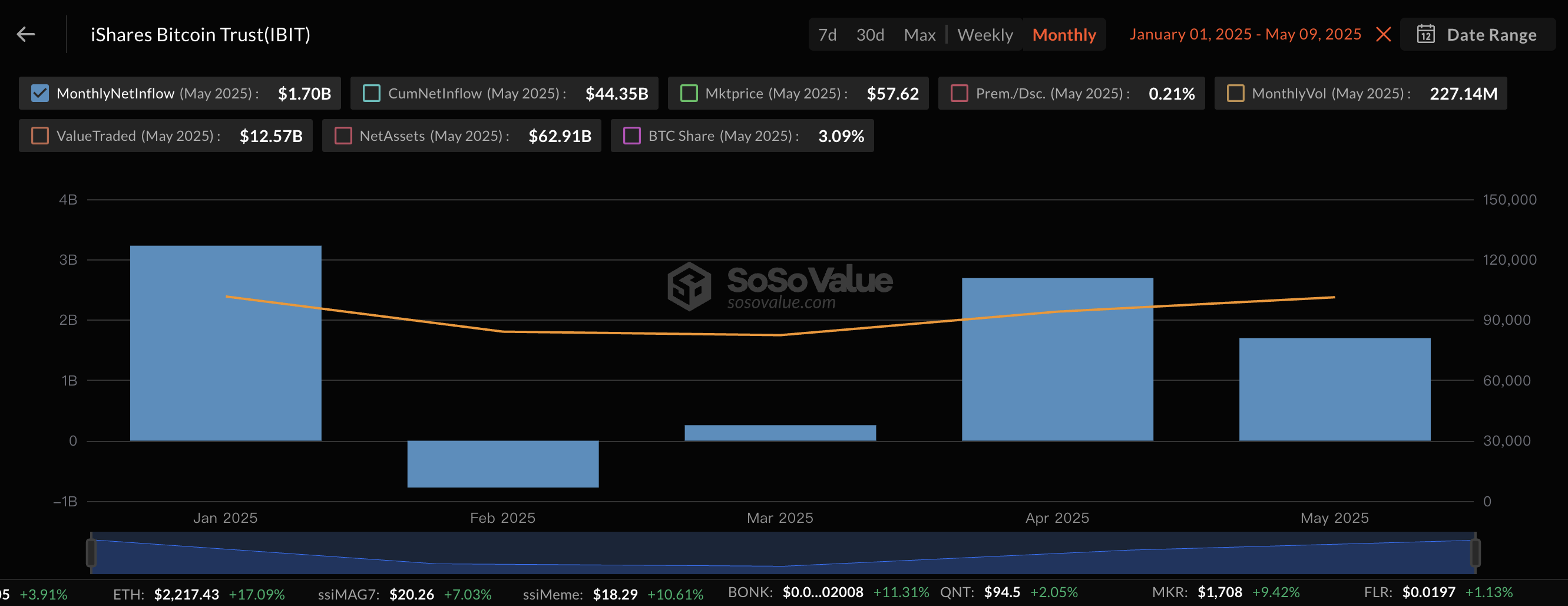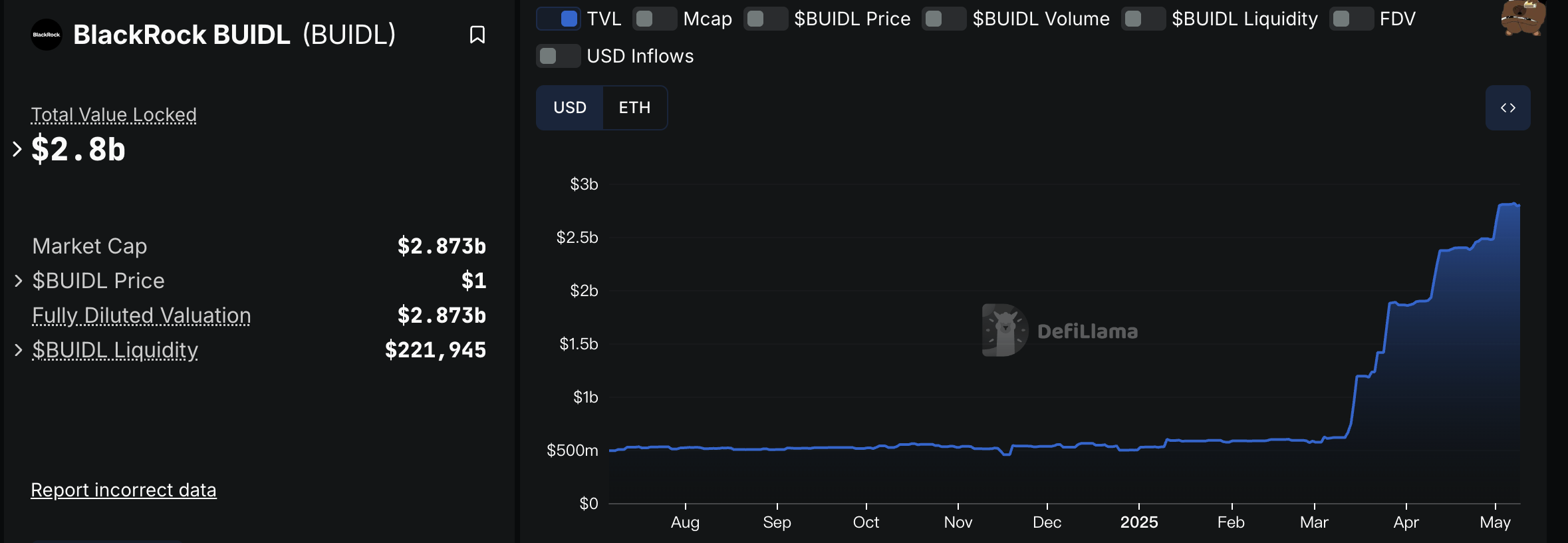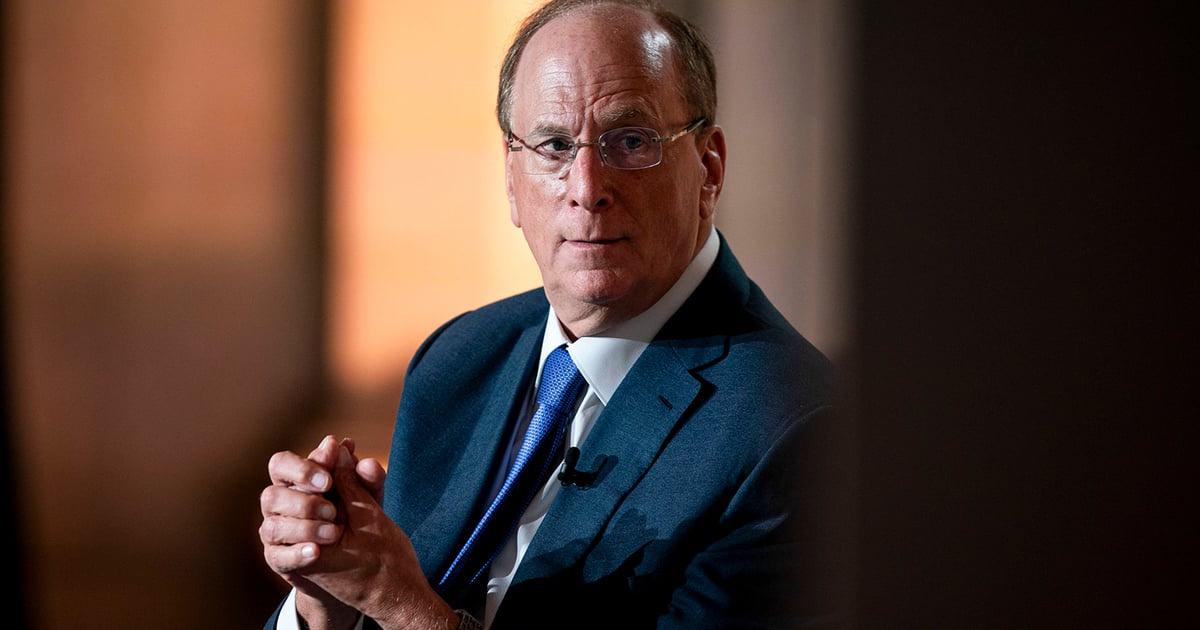Author: Nancy, PANews
A piece of news about "BlackRock IBIT's year-to-date capital inflow exceeds the world's largest gold fund", coupled with Bitcoin's return to $100,000 on May 8, became the focus of market attention.
The Bitcoin ETF took over the crypto community, making Wall Street an important buyer of Bitcoin, pushing this once marginal asset to achieve mainstream and regulatory compliance, and becoming a key piece of the puzzle in BlackRock's global financial landscape.
BlackRock, the world's largest asset management company, manages $11.5 trillion in assets. However, this "asset management giant on the surface" has long been more than just an asset manager. BlackRock, known as the financial hub of the "shadow central bank", is deeply involved in the formulation of global capital flows, the shaping of policy orientations, and the construction of systemic financial instruments.
From IBIT to BUIDL, BlackRock's on-chain layout
In the traditional financial order, BlackRock has long been a player who controls the rules of the game. Today, this financial giant is quietly building a value bridge between traditional capital and digital assets, trying to reconstruct the future financial order.
Over the past decade, one of the core issues that has remained unresolved in the crypto market is “When will the US SEC approve a Bitcoin spot ETF?” Dozens of institutions have tried to do this, but have repeatedly run into obstacles. It was not until June 2023 that BlackRock formally submitted an application for a Bitcoin spot ETF. This was not just an application, but also a catalyst for market confidence. The market quickly realized that when even BlackRock was on the side of Bitcoin, it was only a matter of time before regulation was passed.
In January 2024, the SEC officially approved several Bitcoin spot ETFs, including BlackRock's IBIT. This event not only became a "watershed in Bitcoin compliance," but also meant a redistribution of narrative power: BlackRock used an ETF to introduce Bitcoin into the orthodox stage of mainstream finance.
After IBIT went online, it quickly attracted massive institutional funds, not only ending Grayscale GBTC's monopoly on Bitcoin exposure, but also surpassing the world's largest gold ETF GLD in capital inflows.

According to public data, IBIT has received a net inflow of about $6.97 billion since the beginning of this year, exceeding GLD's $6.29 billion during the same period. Although Bitcoin rose only 1.4% during the same period, gold rose 24.9%, but funds poured into IBIT against the trend, showing that the market highly recognizes its long-term allocation value.
Eric Balchunas, senior ETF analyst at Bloomberg, pointed out that the continued attraction of funds during the period of price weakness confirms the asset allocation value of Bitcoin as "digital gold", and it is expected that the scale of BTC ETF will be three times that of gold ETF in 3-5 years. Michael Saylor, chairman of Strategy, made a bolder prediction that BlackRock IBIT will become the world's largest ETF within ten years.
However, IBIT is just the starting point of BlackRock’s bigger picture. Rather than promoting an ETF, BlackRock is reshaping a new financial infrastructure with tokenization at its core.

In March 2024, BlackRock launched the tokenized money market fund BUIDL, which became its first traditional asset fund to run completely on the chain. As of May 2025, BUIDL's TVL has exceeded US$2.8 billion, ranking first in the global RWA track, far ahead of competitors such as WisdomTree and Franklin Templeton. This also means that BUIDL is no longer an experimental project, but a realistic path verified by the market.
Furthermore, BlackRock has recently applied to establish DLT Shares and announced the completion of on-chain mapping of $150 billion in assets, covering multiple fields such as real estate trusts and commodities. This case not only marks the entry of RWA into the commercialization and scale-up stage, but also makes on-chain finance move from marginal experiments to the extension of traditional capital markets.
The Counterattack of Wall Street Losers
The starting point of everything can perhaps be traced back to an office in Manhattan in 1986.

That year, Larry Fink was a hot star trader on Wall Street and the youngest managing director in the history of First Boston. He led the most cutting-edge financial innovation at the time - mortgage-backed securities (CMO). But a mistake in an interest rate bet caused his company to lose more than $100 million, and his career fell into a trough. However, this financial Waterloo inspired him to reflect deeply on risk management and planted the seeds for BlackRock's future rise.
Two years later, Larry Fink and several former comrades founded BlackRock Financial Management with the support of BlackRock Group. This was also the predecessor of BlackRock, with a start-up capital of only $5 million. Unlike the high-frequency trading and speculative arbitrage trend that was popular on Wall Street at the time, Larry Fink took risk management as the core concept. This concept later became the underlying logic and moat for BlackRock to sweep the global asset management industry.
With its deep insight into the fixed income market and innovative asset management model, BlackRock quickly emerged. By the end of 1994, BlackRock's asset management scale (AUM) had surged from $1.2 billion at its inception to $53 billion. In the same year, it was officially spun off from the Blackstone Group and renamed "BlackRock", which marked the start of its true global expansion.
BlackRock's core moat is not just the size of its funds, but the epoch-making financial risk analysis platform it developed, the Aladdin system. This risk control and asset allocation analysis platform is known as the "super brain" of the global capital market. It performs more than 5,000 portfolio stress tests every day and calculates 180 million option adjustments every week, bringing BlackRock up to $1.4 billion in revenue in 2022 alone. More importantly, Aladdin has now become an important global financial infrastructure. More than 200 large financial institutions around the world, including UBS, Deutsche Bank, the Swiss National Bank, and even the Federal Reserve, are using Aladdin for risk control and asset allocation management. The scale of its service assets exceeds $20 trillion, which is almost equivalent to one-fifth of the global GDP. In a sense, BlackRock's influence has surpassed traditional asset managers, and it is also a "prediction machine" for global market sentiment and capital flows.
Moreover, BlackRock has also gained the right to speak in global capital allocation through its ETF business. After the real estate bubble burst in 2008, the market urgently needed an investment tool with high transparency, low cost and high liquidity. ETF quickly became an important choice for institutional and retail investors seeking risk diversification and asset allocation efficiency. BlackRock then acquired BGI under Barclays in the UK for US$13.5 billion in 2009, acquiring iShares ETF, the world's largest index fund brand.
ETFs are not only passive investment tools, but also channels for international capital allocation rights. Whoever can be included in the index can obtain liquidity, and BlackRock has become the maker and referee of this global capital game. According to official disclosures, iShares ETF assets have reached 3.3 trillion US dollars, managing more than 1,400 ETFs, covering almost all major markets in the world. And through ETFs, BlackRock has gradually penetrated into the shareholder structure of almost every large listed company in the United States. According to data from 2023, the three giants of index funds, including BlackRock, are the largest single shareholders of more than 90% of S&P 500 companies, becoming the "invisible hand" in the equity structure of American companies.
"Revolving Door", BlackRock's Secret Weapon in Capital Gaming
What really brought BlackRock into the global public eye was its role as the "backstage central bank" in all previous financial crises. In particular, during the 2008 global financial crisis, with the collapse of Lehman Brothers and the near bankruptcy of AIG, the entire financial system was in jeopardy. The U.S. Treasury and the Federal Reserve were in urgent need of an external professional institution that not only understood asset pricing but also could operate liquidation. BlackRock took over this hot potato, not only assisting in the liquidation of non-performing assets, but also helping the Federal Reserve design the largest asset rescue plan in history, TARP.
Since then, BlackRock's role is no longer just a player in the market, but has become a bridge for policy implementation. In 2020, the COVID-19 pandemic caused global markets to plummet again. The Federal Reserve once again called on this "old friend" and intervened in the market directly through ETFs, which was unprecedented. The iShares series of funds under BlackRock carried out this action. Critics also believe that BlackRock's relationship with the US government is "too close." It can be said that BlackRock is not only a private giant in the market, but also a policy implementation tool trusted by the government.
Behind this, there is a more secretive system: the revolving door between politics and business.
In the past, a large number of BlackRock's senior executives have taken up important positions in government agencies such as the U.S. Treasury Department and the Federal Reserve after leaving their jobs, and some officials who once served in the U.S. government have also joined BlackRock after leaving their jobs. This interweaving of political and business relations often means a preemptive advantage under information asymmetry, providing BlackRock with a unique advantage in its strategic layout on the global stage.
Today, BlackRock's tentacles are no longer limited to the financial field. In recent years, it has continued to lay out major economic arteries such as energy, data, medical care, logistics and even ports. Recently, BlackRock also plans to acquire 43 port projects from Cheung Kong Hutchison, owned by Li Ka-shing, for US$22.8 billion. If the transaction is completed, BlackRock will become one of the actual controllers of the world's largest port network, involving more than 100 key nodes, and will have a more far-reaching influence on the operation of the global economy. According to the Wall Street Journal, such transactions have even been tacitly approved or even supported by the US government. In other words, BlackRock is no longer just a market participant, but an executor of the power game between major powers.
The story of BlackRock is not only a successful example of Wall Street, but also a realistic textbook on how capital in the era of globalization can penetrate power, shape market rules, and influence the future. It does not make news, but it makes rules; it does not directly govern, but it influences fiscal policy; it does not own any company, but it is the largest shareholder behind almost all companies. The existence of this invisible behemoth has already penetrated every corner of our lives.
Because of its high sensitivity to the pulse of global finance and its systemic influence, BlackRock was the first to perceive the structural changes caused by crypto assets. "If the United States cannot control its ever-expanding debt and fiscal deficit, the dollar's "status as a global reserve currency" that it has relied on for decades may eventually give way to emerging digital assets such as Bitcoin." BlackRock CEO Larry FinK said bluntly in his 27-page annual letter to investors in 2025, and mentioned that tokenization is becoming a key force in reshaping financial infrastructure. If SWIFT is a postal service, then tokenization is the email itself-assets can circulate directly and in real time, bypassing all intermediaries. Tokenization will make investment and returns more "democratic." This may not be a bold vision of the CEO, but a calm judgment of the future financial sovereignty landscape. (Related reading: BlackRock CEO's annual letter to investors: Bitcoin may challenge the global status of the US dollar, and tokenization is the future financial highway )
In the on-chain world, BlackRock is trying to dominate not only liquidity, but also the formulation of standards, the construction of infrastructure and the connection with supervision. As history has always shown, BlackRock's intention is never just "how much assets to invest", but whether it can set the rules of the game for the next generation of finance.














